Samsung Galaxy S21 vs. Galaxy S10: What are the key differences?
The Samsung Galaxy S21 and S21 Plus offer significant upgrades over their S10 cousins for about the same price
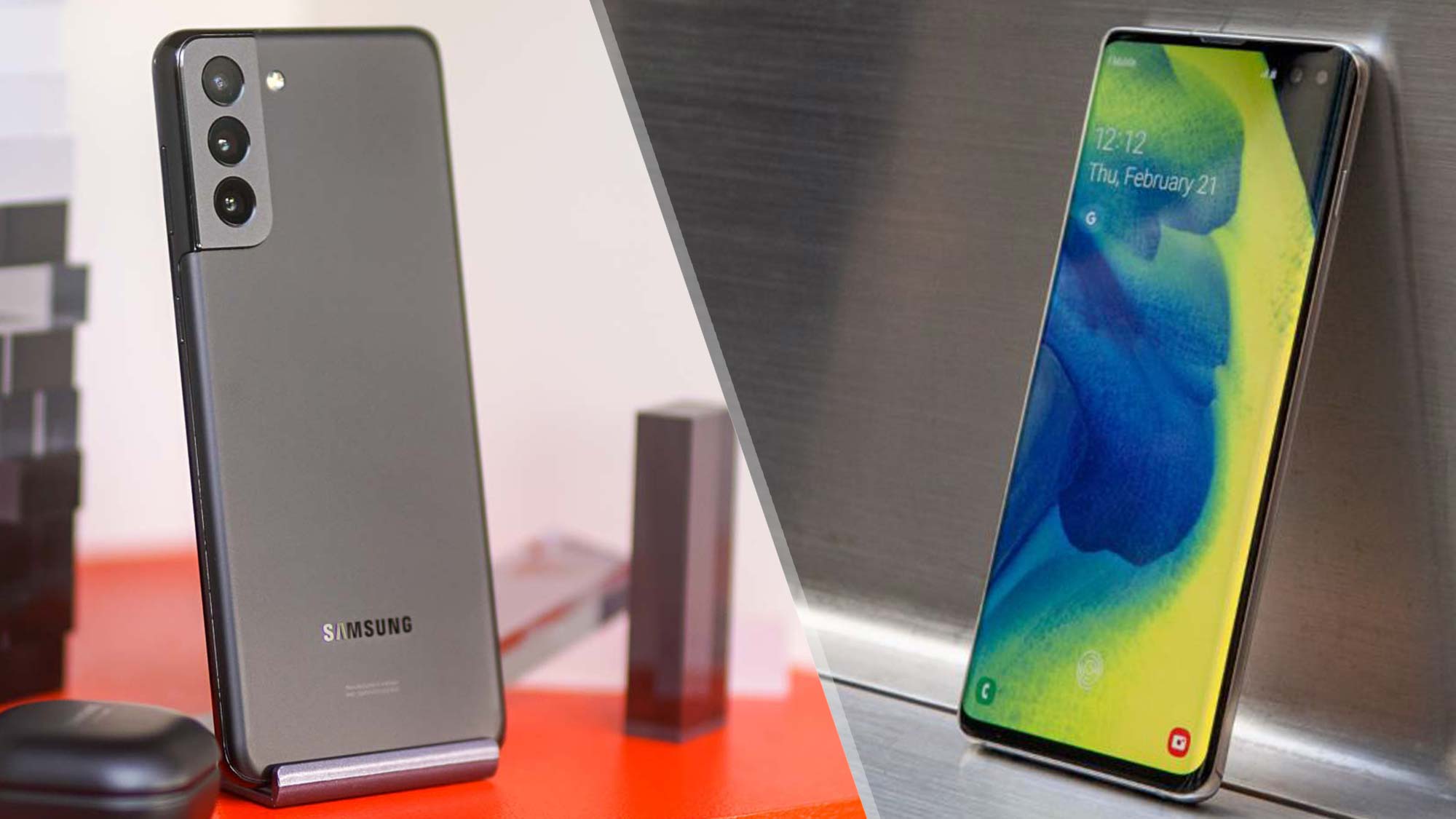
If you're shopping for a Samsung Galaxy S21, it makes sense to compare the latest phones to previous Samsung handsets, if only to see what improvements have been made. The most natural comparison focuses on how this year’s models measure up against the Galaxy S10 and Galaxy S10 Plus. After all, if you bought one of those two phones when they came out in 2019, you’re likely considering an update by now.
Such a comparison shows off several key upgrades in the latest versions. Both the Galaxy S21 and Galaxy S21 Plus offer impressive displays, a big boost in speed thanks to the Snapdragon 888 processor, significant camera improvements, and 5G support as standard instead of requiring a separate, more expensive model.
- Best Samsung phones: Which Galaxy model is best for you?
- Galaxy S21 Ultra vs. Galaxy S20 Ultra: What changes has Samsung made?
- The best phones you can buy now
Two years makes a big difference in the world of smartphones, so it’s obvious that the Galaxy S21 and S21 Plus would have the high ground compared to their S10 cousins. And though the newer devices have lost a couple of features you can find in Samsung’s older phones, our Galaxy S21 vs. Galaxy S10 face-off finds that now’s a great time to update.
We’ll break it all down for you so that you can decide for yourself.
Galaxy S21 vs. Galaxy S10 specs
| Row 0 - Cell 0 | Galaxy S21 | Galaxy S21 Plus | Galaxy S10 | Galaxy S10+ |
| Launch price | $799 | $999 | $899 | $999 |
| Screen size | 6.2-inch Dynamic AMOLED (2400 x 1080; 48Hz - 120Hz) | 6.7-inch Dynamic AMOLED (2400 x 1080; 48Hz - 120Hz) | 6.1-inch Dynamic AMOLED (3040 x 1440; 60Hz) | 6.4-inch Dynamic AMOLED (3040 x 1440; 60Hz) |
| Refresh rate | 48-120Hz | 48-120Hz | 60Hz | 60Hz |
| CPU | Snapdragon 888 | Snapdragon 888 | Snapdragon 855 | Snapdragon 855 |
| RAM | 8GB | 8GB | 8GB | 8GB, 12GB |
| Storage | 128GB, 256GB | 128GB, 256GB | 128GB, 512GB | 128GB, 512GB, 1TB |
| MicroSD | No | No | Yes | Yes |
| Rear cameras | 12MP (f/1.8) wide; 12MP (f/2.2) ultrawide; 64MP (f/2.0) telephoto with 3x optical zoom | 12MP (f/1.8) wide; 12MP (f/2.2) ultrawide; 64MP (f/2.0) telephoto with 3x optical zoom | 12MP (f/1.5, f/2.4) wide; 16MP (f/2.2) ultrawide; 12MP (f/2.4) telephoto with 2x optical zoom | 12MP (f/1.5, f/2.4) wide; 16MP (f/2.2) ultrawide; 12MP (f/2.4) telephoto with 2x optical zoom |
| Front cameras | 10MP (f/2.2) | 10MP (f/2.2) | 10MP (f/1.9) | 10MP (f/1.9); 8MP (f/2.2) |
| Battery size | 4,000mAh | 4,800mAh | 3,400mAh | 4,100mAh |
| Battery life (Hrs:Mins) | 9:53 (60Hz); 6:31 (adaptive) | 9:53 (60Hz); 9:41 (adaptive) | 10:19 | 12:35 |
| Wireless | 5G, Wi-Fi 6E, UWB | 5G, Wi-Fi 6E, UWB | LTE, Wi-Fi 6 | LTE, Wi-Fi 6 |
| Size | 6 x 2.8 x 0.31 inches | 6.4 x 3 x 0.31 inches | 5.9 x 2.77 x .31 inches | 6.2 x 2.92 x .31 inches |
| Weight | 6.07 ounces | 7.13 ounces | 5.54 ounces | 6.17 ounces |
| Colors | Phantom Violet, Phantom Gray, Phantom Pink, Phantom White | Phantom Violet, Phantom Silver, Phantom Black | Prism White, Prism Black, Prism Green, Prism Blue, Canary Yellow, Flamingo Pink, Cardinal Red, Smoke Blue | Prism White, Prism Black, Prism Green, Prism Blue, Canary Yellow, Flamingo Pink, Ceramic Black, Ceramic White, Cardinal Red, Smoke Blue |
Galaxy S21 vs. Galaxy S10: Prices
Samsung opted to introduce the Galaxy S21 family at lower prices this year, dropping from what many considered to be too high with the S20 series. The entry-level Galaxy S21 with 128GB of storage will cost you $799; add on another $50 to get the 256GB variant.
Meanwhile, the Galaxy S21 Plus comes in at $999 for the base model and another $50 for the 256GB version.
Starting prices for the Plus models hasn't changed, with the Galaxy S10 Plus debuting at $999 in 2019 before Samsung cut the price to $849 with the launch of the Galaxy S20 Plus a year later. Prices have dropped further since then.
Sign up to get the BEST of Tom's Guide direct to your inbox.
Get instant access to breaking news, the hottest reviews, great deals and helpful tips.
As for the entry-level models, the Galaxy S21 is $100 cheaper than the Galaxy S10 was at launch. What's more, the S10's price has dropped, first to $749 in 2020, with further declines into this year.
Should you be considering an upgrade, head to Samsung first, where the phone maker is offering rebates when you trade-in older models. For instance, a Galaxy S10 will get you up to $450 in credit on either the Galaxy S21 or Galaxy S21 Plus. We're tracking the best Samsung Galaxy S21 deals at other retailers and wireless carriers as well.
Galaxy S21 vs. Galaxy S10: Design
Samsung changed its design language with the S20 series, refining it for the S21. The rear cameras are confined to one corner on the back instead of being a bar. The front camera cutout is centered along the top instead of being off to one side. In short, some similarities remain between the two device families, but you really have to look for them.
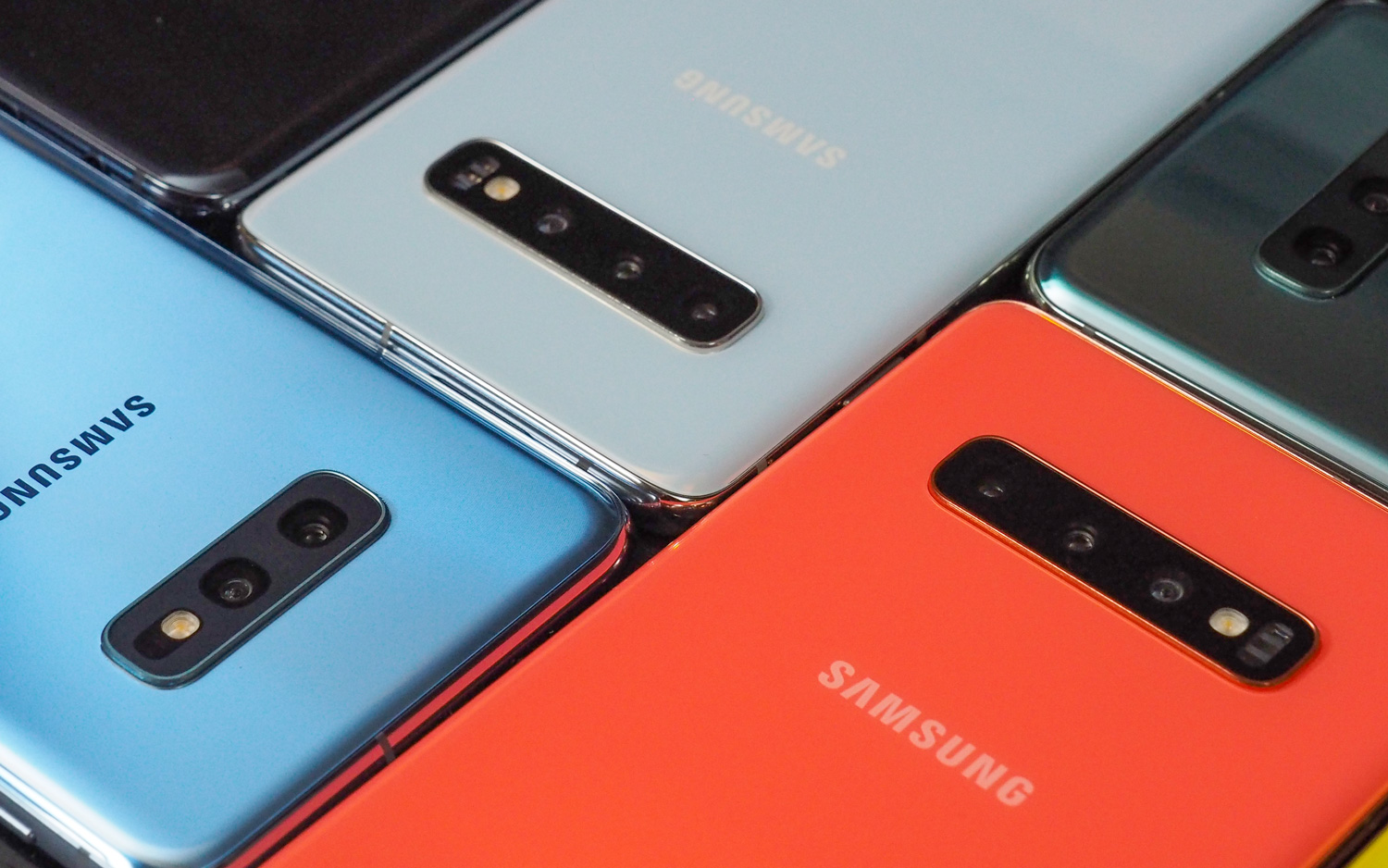
The S10 and S10 Plus received plenty of fun and wacky color options, notably the yellow one, whereas the S21 and S21 Plus are more reserved in their Phantom Violet, Phantom Gray, Phantom Pink (S21), Phantom Black (S21 Plus), and Phantom White (S21) colorways.
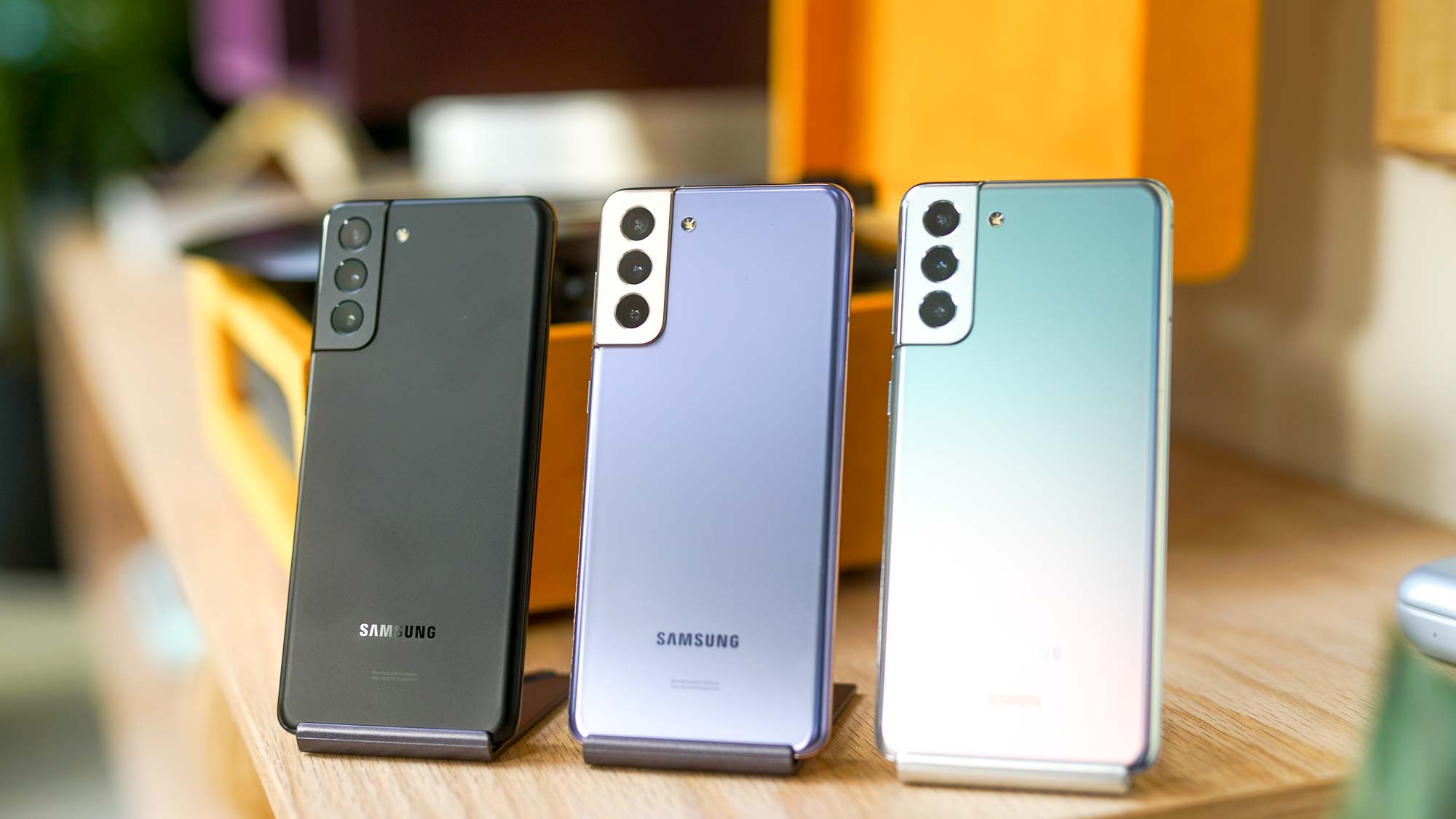
Both the S21 and S21 Plus are heavier than the S10 and S10 Plus — the S21 is almost as heavy as the S10 Plus, in fact. All of these phones are the same thickness at 0.31 inches, but the S21 and S21 Plus are larger at 6 x 2.8 inches and 6.4 x 3 inches, respectively. Compare that to the 5.9 x 2.77-inch S10 and 6.2 x 2.92-inch S10 Plus. It’s a moderate difference, especially given that the batteries in the S21 and Plus are bigger than those found in the S10 and S10 Plus.
Galaxy S21 vs. Galaxy S10: Display
Samsung has had some of the best smartphone displays for years, but with the S20 series, it embraced high refresh rates. For the Galaxy S21 and S21 Plus, Samsung lowered the screen resolution to full HD (1080p), but offered a variable refresh rate, which can ramp up to 120Hz.
So while the total resolution isn’t as high as the Galaxy S10 and S10 Plus, the S21 and S21 Plus can be locked to 120Hz all the time or adaptively dropped to save battery. The S10 models are stuck at 60Hz, though with QHD resolution.
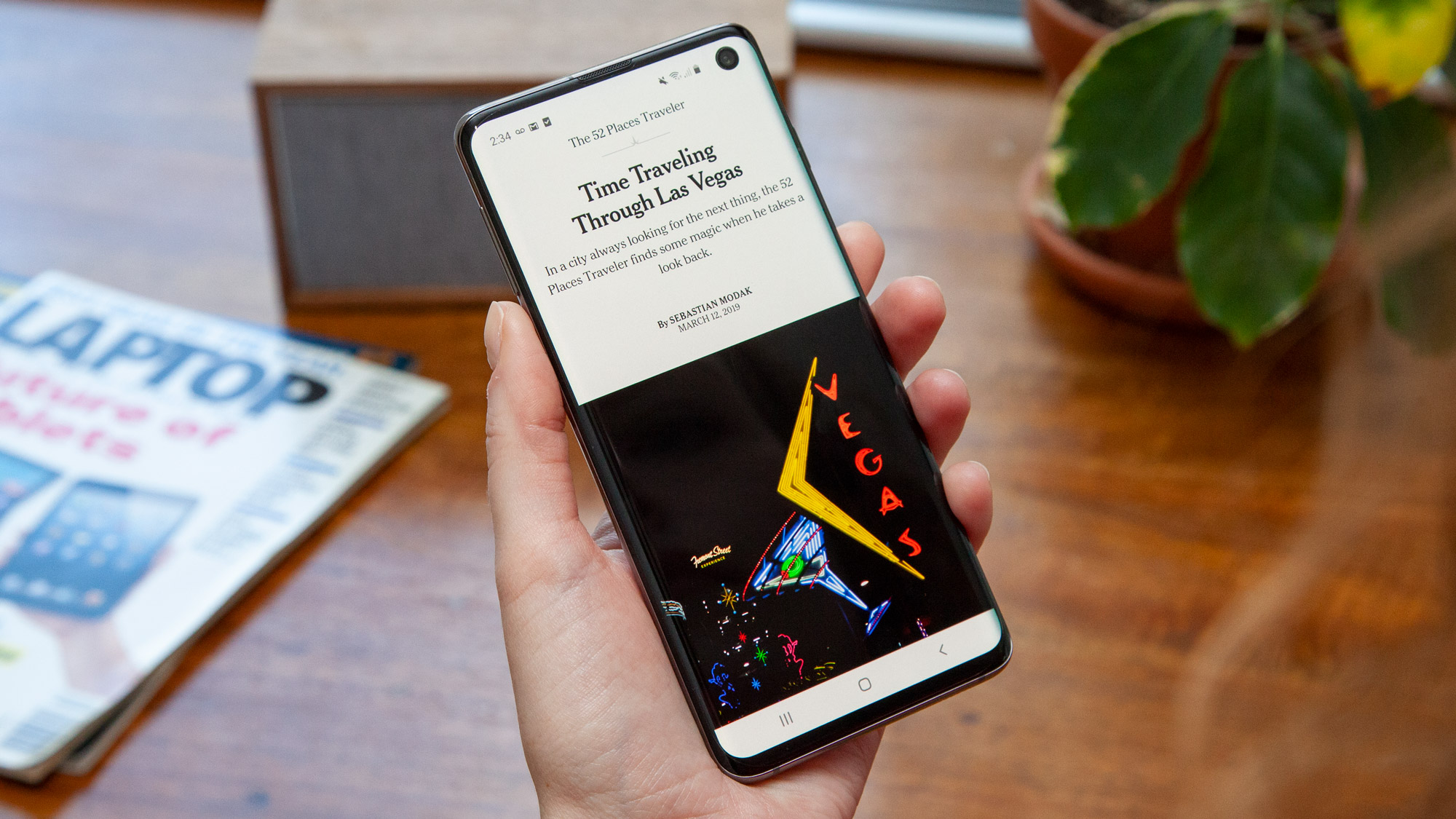
You still have incredible displays on these older Samsung phones, but once you see Android at 90 frames per second or higher (120fps in the case of the S21/Plus), it’s hard to go back to 60. The difference is very noticeable and it’s for the better.
Galaxy S21 vs. Galaxy S10: Cameras
Samsung stuck with a triple camera setup on the S21 and S21 Plus — which is basically the same as the Galaxy Note 20’s — though there have been improvements to the telephoto lens. It now sports 3x optical zoom versus the 2x on the S10 and S10 Plus, while Samsung’s Space Zoom feature can result in 30x photos on the newer phones. It’s rather impressive.
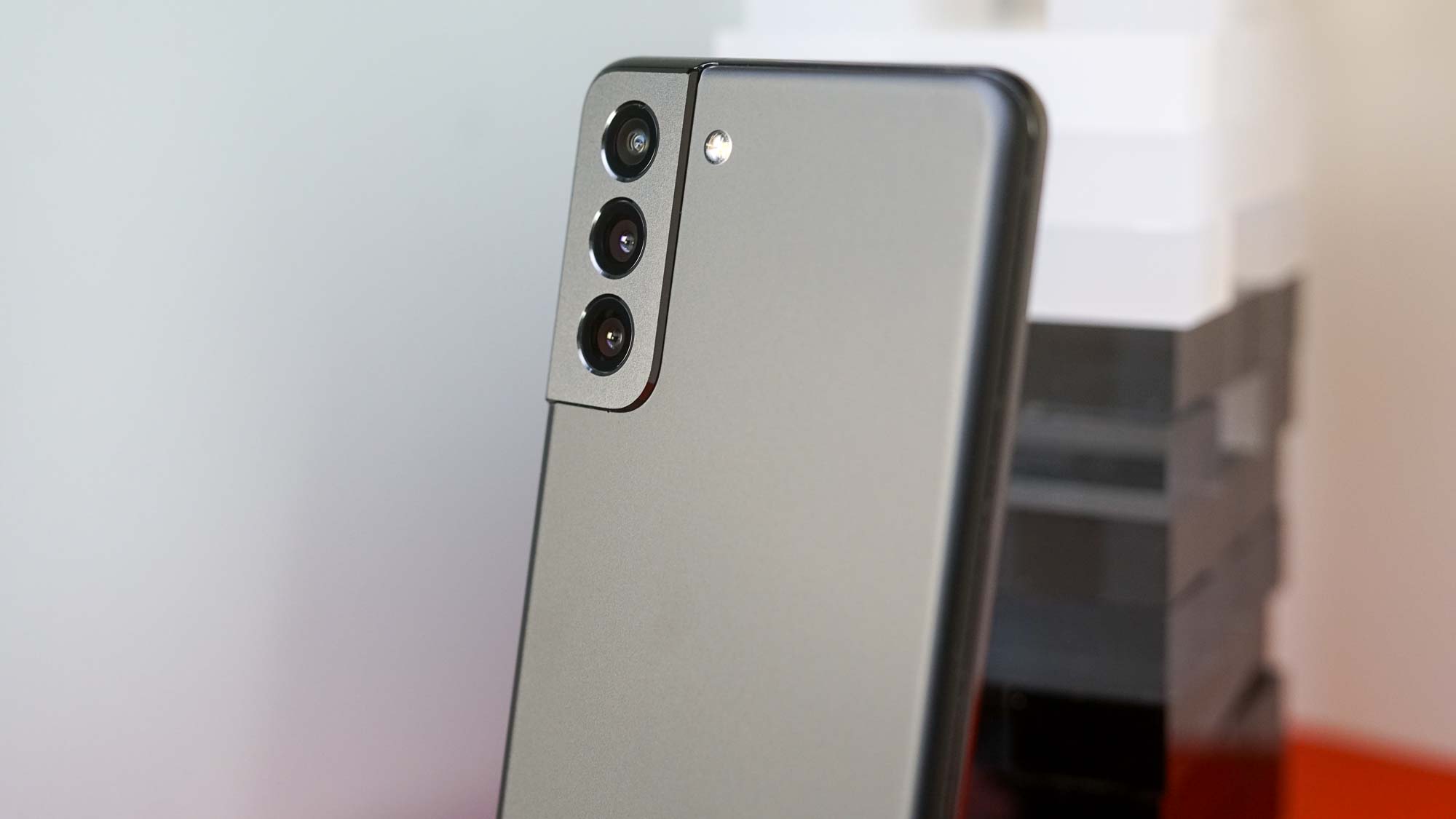
All of these Samsung phones feature ultrawide lenses to get those dramatic shots, especially for nature scenes. The big differences come down to software-powered camera features on the newer models, like the crazy Space Zoom feature that can net you 30x zoom photos, or the Super Steady mode that uses AI to keep your video steady.
Some camera features have found their way to the S10 by way of software updates. Verizon users, for example, got a software update for the Galaxy S10 models that lets the Photo, Portrait, and Hyperlapse camera modes detect low-light. Still, if you want the best camera features possible, it's better to go with the newer models.
For the front cameras, all four phones have a 10MP sensor, though the Galaxy S10 Plus adds an additional 8MP shooter alongside. If the selfie game is important to you, you won’t be disappointed with the S21 and S21 Plus, though the differences in photo quality versus the S10 and S10 Plus may not be readily apparent to most people.
Galaxy S21 vs. Galaxy S10: Performance
It may seem obvious, but performance metrics will be much different between the S21 and the S10 families. The new Snapdragon 888 in the Galaxy S21 and S21 Plus is a beast and is the best performing CPU in Android land.
Conversely, the S10 and S10 Plus rock the Snapdragon 855, which is still more than fine for the vast majority of people out there but two years older than the Snapdragon 888. Basically, unless you’re a spec junky, there’s no need to jump to the S21 just to get the bump in performance.
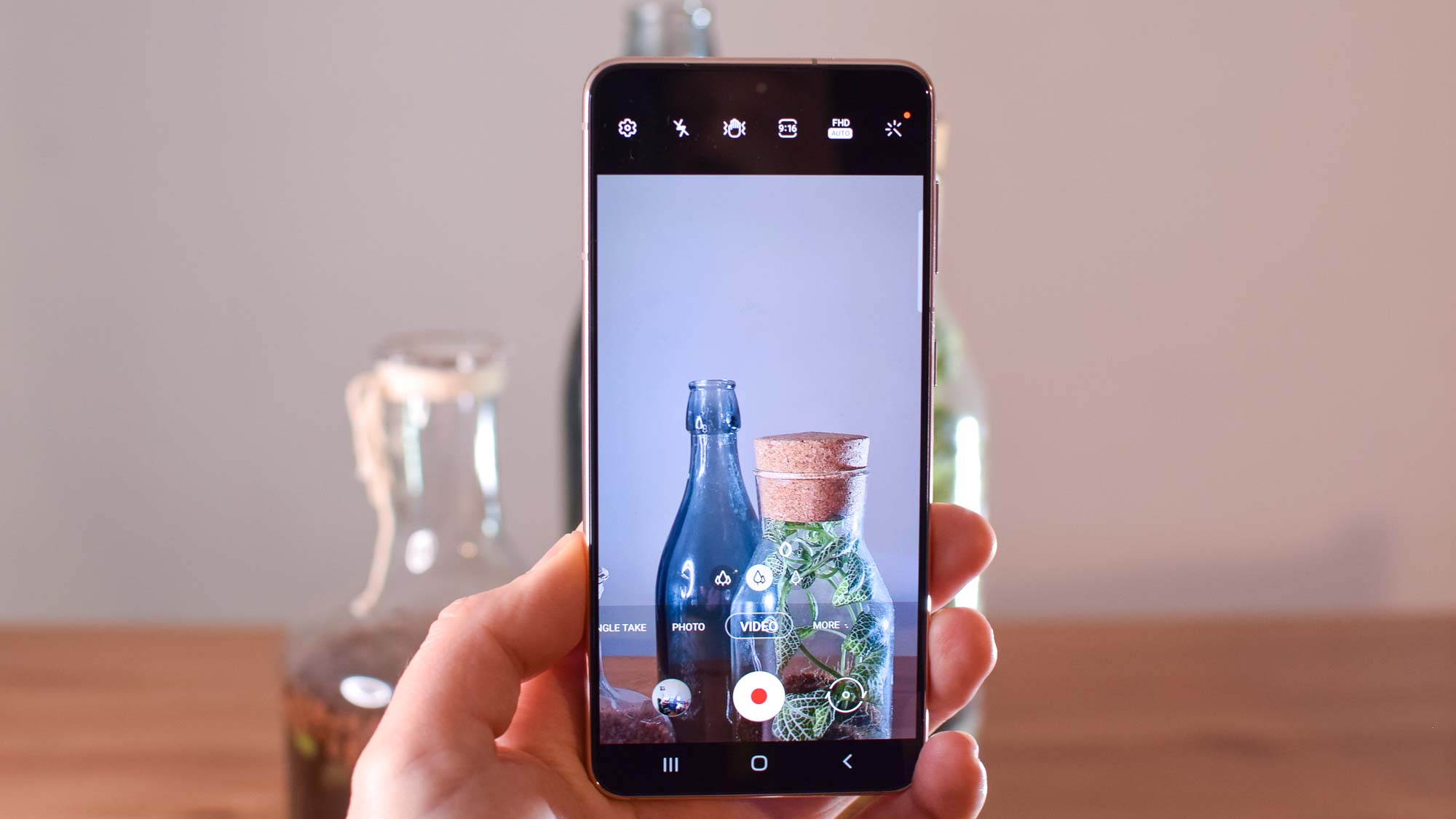
The Galaxy S21 and S21 Plus were the fastest Android phones we’ve tested when they came out, though the OnePlus 9 Pro and ROG Phone 5 have since surpassed Samsung's devices. We have a full breakdown of our original Galaxy S21 benchmarks if you’re interested in checking that out.
Paired with the 8GB of RAM, you won’t find anything that the S21 and S21 Plus can’t do as far as smartphones go. The higher-end version of the S10 Plus came with 12GB of RAM as an option, which could be helpful with keeping more apps in memory. That being said, we’re confident that most of you will be just fine with the S21/Plus’ 8GB.
Storage on all of these phones starts at 128GB. The S21 and S21 Plus go up to 256GB, while the S10 topped out at 512GB. That doesn’t even come close to what the top-tier S10 Plus saw: a whopping 1TB. All of that was on top of a microSD card slot, which the S21 series lacks. So if you store all the things on your phone and you opted for the 512GB or 1TB options on your S10 or S10 Plus, you may want to find a backup solution elsewhere if you’re upgrading to an S21 or S21 Plus.
5G connectivity comes standard on the Galaxy S21 and S21 Plus, which are compatible with all the 5G networks available in the U.S. Samsung released a separate Galaxy S10 5G back in 2019, and it was a pretty pricey model for early adopters.
Galaxy S21 vs. Galaxy S10: Battery and charging
Both the Galaxy S21 and S21 Plus pack larger batteries than their S10 counterparts. The smaller S21 has a 4,000 mAh battery compared to the S10’s 3,400mAh; the S21 Plus houses a 4,800 mAh battery versus the S10+’s 4,100mAh.
Not only are the batteries physically bigger in the S21 series, but they’re paired with the more power-efficient Snapdragon 888. Samsung has also talked about the new AI features on the S21 and S21 Plus, claiming that it will learn your usage patterns and adjust the power consumption accordingly.
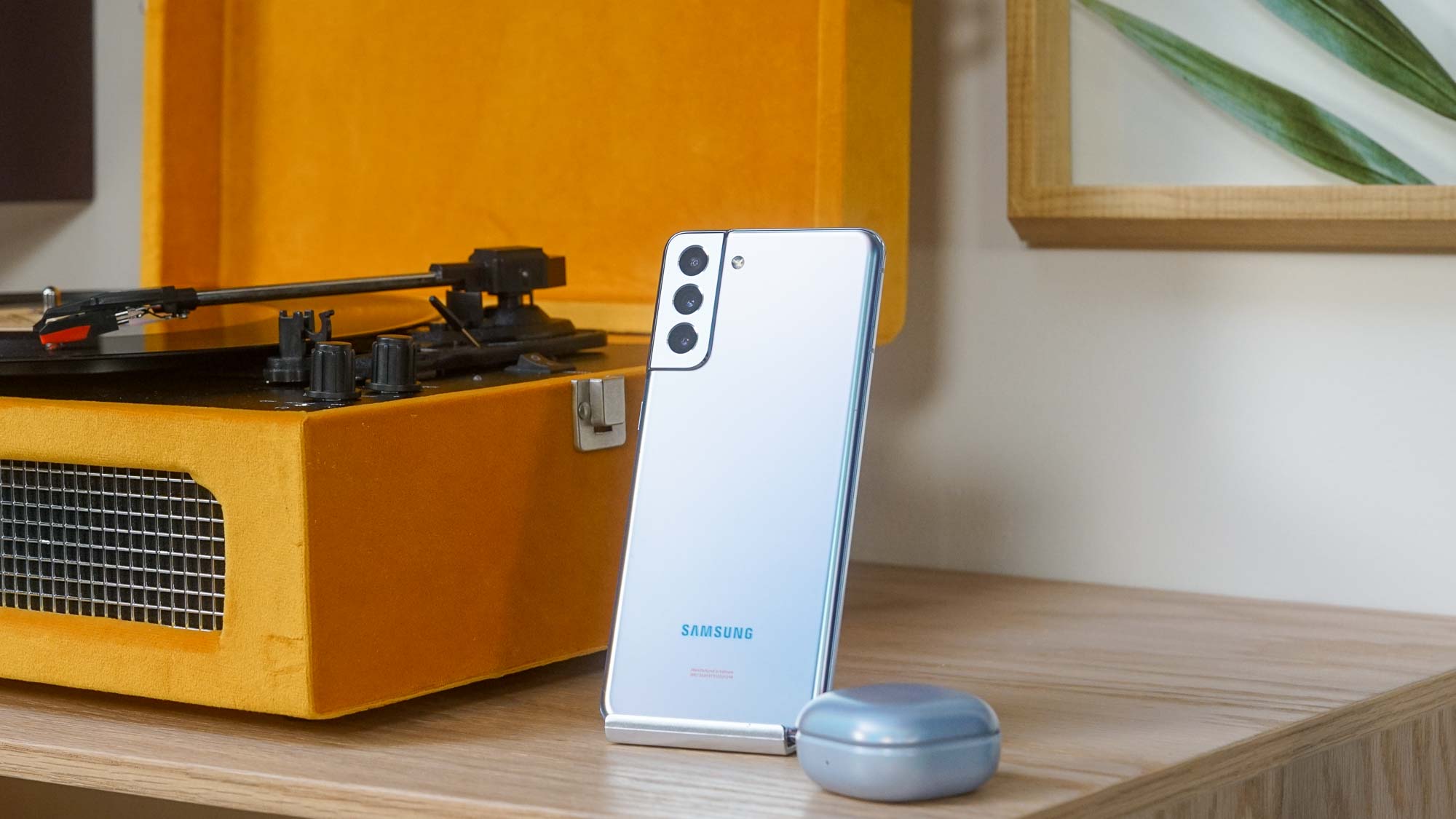
Sadly, that didn't translate to great times in our battery test, where we have phones surf the web until they run out of power. The Galaxy S21 lasted 9 hours, 53 minutes and that was with the phone's display set at 60Hz; turn on the adaptive display and the S21 ran out of juice 3 hours faster. The Galaxy S21 Plus turned in a more consistent performance in line with the average smartphone. However, the Galaxy S10 and S10 Plus both lasted longer on a charge when we tested those phones in 2019.
The S21 family features 25W fast charging, meaning you can top off your phone pretty quickly, assuming you buy the charger separately since it’s not included with the phones. The S10 and S10 Plus saw 15W charging out of the box. (The S10 5G had 25W fast charging.)
It’s worth noting that none of the Galaxy S21 phones come with a charger, so in order to get the full fast charging experience, you’ll need to pay separately for a charging brick. Some make arguments for this, in terms of reducing electronic waste and packaging, but we understand why some might find this decision annoying.
Galaxy S22 vs. Galaxy S10: What about the Galaxy S22?
Of course, it's a new year, which means that it's time for a new round of Galaxy S devices. The Galaxy S22 is right around the corner, so if you're still holding onto your Galaxy S10, then we'd recommend you hold out just a little bit longer. Rumors paint all three Galaxy S22 models to be significant upgrades over your current hardware. Three years will do that.
Unless you find a steal of a deal on a Galaxy S21, we think it's best to wait to see what Samsung has in store. We won't have to wait long.
Galaxy S21 vs. Galaxy S10: Bottom line
If you’re still using a Galaxy S10 or S10 Plus, the S21 and S21 Plus are great options if you’re looking to, or are ready for, an upgrade. You’ll get even better displays, 5G, improvements to the cameras, faster charging, and bigger batteries. Not only that, but you get the latest that Qualcomm has to offer with the Snapdragon 888 processor.
Coming from the S20 series is a much smaller jump, so unless you really want Samsung’s latest, there’s not a whole lot you’re missing out on. It is amazing, however, what a difference two years can make in smartphone technology.
It’s a bummer that the S21 and S21 Plus don’t include a charger, but the truly grating omission is the removal of the microSD card slot. Why Samsung did this remains a mystery, but it's not going to be a move that makes users happy. If you must have expandable storage, it’s probably best to stick with your S10 or S10 Plus, or grab one of the S20 phones now that their prices have gone down.
Even so, it’s no surprise that the Galaxy S21 and S21 Plus are superior to their S10 cousins. If you’re ready to upgrade, these might be the Samsung models that finally push you to trade in your phone.

Jordan is the Phones Editor for Tom's Guide, covering all things phone-related. He's written about phones for over six years and plans to continue for a long while to come. He loves nothing more than relaxing in his home with a book, game, or his latest personal writing project. Jordan likes finding new things to dive into, from books and games to new mechanical keyboard switches and fun keycap sets. Outside of work, you can find him poring over open-source software and his studies.
-
COLGeek Reply
Using an adapter like this solves that problem. I use daily with a Bose headset to great success.John468 said:The Samsung S21 does not have a 3.5 mm headphone jack. That is a deal breaker for me.
https://store.google.com/us/product/usb_c_headphone_adapter -
Harry Devlin The loss of MST is a deal-breaker that the article fails to mention. The loss of the MicroSD card slot, the loss of the headphone jack, and the poorer resolution screen (except in the S21 Ultra) are other reasons to avoid the S21.Reply
It'll be interesting to see if there is a Note 21 that doesn't lose the MicroSD card slot and that doesn't lost MST, though the return of a headphone jack is hopeless.
